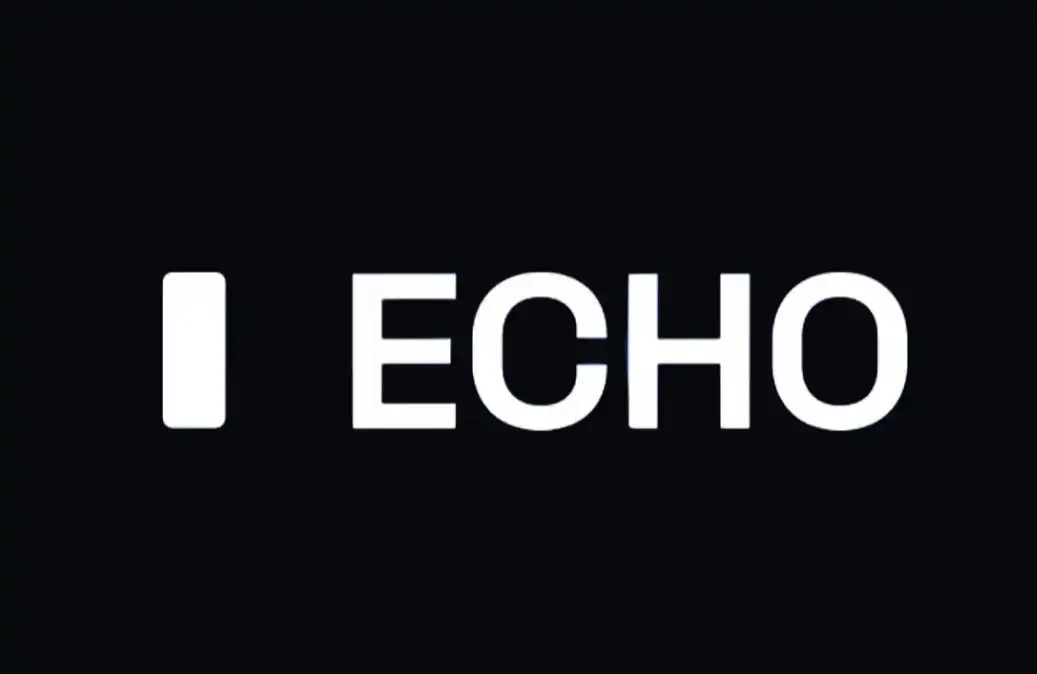Grayscale: What's Different About the Bitcoin Halving in 2024?
Original Title: "2024 Halving: This Time It's Actually Different"
Author: Michael Zhao, Grayscale
Translation: Luccy, BlockBeats
Editor's Note:
The upcoming Bitcoin halving may be a bullish development, as historically, the post-halving period has seen the bull market reach new highs. However, Grayscale points out that attributing these rebounds solely to the decrease in Bitcoin supply inflation may oversimplify history.
From a macro perspective, Bitcoin price increases are often related to the macroeconomic environment, and these periods coincide with Bitcoin halving periods, such as the financial stimulus measures taken during the COVID-19 pandemic, which also played a role in Bitcoin's prosperity. For Bitcoin miners, the halving event often eliminates inefficient players who cannot afford half of the Bitcoin reward. However, at the same time, the halving drives Bitcoin network activity, transaction fees, and miner income, inspiring new innovations to solve scalability issues.
The Grayscale research team delves into the impact of halving supply, miner responses, on-chain activities led by engravings and Layer2, and potential capital inflows from ETFs, pointing out that the 2024 Bitcoin halving will be different from every previous one. BlockBeats translates the original article as follows:
· Supply impact: The issuance of Bitcoin will be halved around April 2024. Despite short-term income challenges for miners, the fundamental on-chain activity and positive market structure updates make this halving fundamentally different from previous ones.
· Miner's situation: Faced with reduced block reward income and high production costs, miners will raise funds through equity or debt issuance and reserve sales to try to alleviate short-term financial pressure.
· On-chain activities continue to grow: The emergence of inscriptions has revitalized on-chain activities. As of February 2024, more than 59 million NFT-like collectibles have been engraved, bringing miners over 200 million US dollars in transaction fees. Thanks to renewed attention from developers and continuous innovation on the Bitcoin blockchain, this trend is expected to continue.
· Impact of Bitcoin ETF on the market: The continued adoption of Bitcoin ETFs may significantly absorb selling pressure, potentially reshaping the market structure of Bitcoin and providing a new source of stable demand, which is positive for prices.
As we approach the 2024 halving, Bitcoin is not only alive but also evolving. With the historic approval of a Bitcoin ETF in the US and changes in fund flows, the structure of the Bitcoin market is changing. In this article, we will delve into the meaning and importance of halving and its historical impact on Bitcoin performance. Then, we will examine the current pattern of Bitcoin and explain why the situation will be very different in just one year.
What is halving?
New Bitcoin is generated through a process called "mining", where computers solve computationally intensive problems to obtain new Bitcoin block rewards. The issuance of Bitcoin is limited by design - approximately every four years, mining rewards are "halved", effectively halving the issuance of new coins.
Chart 1: Bitcoin's Supply Schedule

Source: Bitcoinblockhalf.com. The Bitcoin supply schedule has remained unchanged since its inception.
The deflationary nature of Bitcoin is a fundamental attraction for many Bitcoin holders. While the supply of fiat currency depends on central banks and the supply of precious metals is influenced by natural forces, the issuance rate and total supply of Bitcoin have been determined by its underlying protocol since its inception. The combination of a fixed total supply and gradually decreasing inflation rate not only creates scarcity, but also embeds deflationary characteristics into Bitcoin.
除了显而易见的供应影响外,围绕比特币减半的兴奋和期待还源于其一直以来与比特币价格上涨有关:
Apart from the obvious supply impact, the excitement and anticipation surrounding the Bitcoin halving also stem from its long-standing association with the rise in Bitcoin prices.Chart 2: Bitcoin price tends to rise after halving

Source: Glassnode. As of February 6th, 2024. Past performance is not indicative of future results.
However, it is important to note that the price of Bitcoin may not necessarily rise after the halving. As these events are highly anticipated, rational investors may buy in advance, causing the price to rise before the halving. This has led to frameworks such as the Stock-to-Flow model, which creates visually appealing charts by correlating scarcity with price increases, but ignores the fact that this scarcity is not only predictable, but widely known in advance. By observing other cryptocurrencies that use similar halving mechanisms, such as Litecoin, we can conclude that the latter did not experience sustained price increases after the halving. This suggests that while scarcity may sometimes affect prices, other factors also play an important role.
Unlike the attribution of the price increase to the halving itself, these periods seem to coincide with significant macroeconomic events. For example, in 2012, the European debt crisis highlighted Bitcoin's potential as an alternative store of value in times of economic turmoil, leading to its price rising from $12 to $1,100 in November 2013. Similarly, during the initial coin offering frenzy in 2016 - which injected over $5.6 billion into altcoins - Bitcoin indirectly benefited, pushing its price from $650 to $20,000 in December 2017. Particularly noteworthy is the period during the COVID-19 pandemic in 2020, where massive stimulus measures exacerbated inflation concerns and may have pushed investors towards Bitcoin as a hedge, causing its price to rise from $8,600 to $68,000 in November 2021. These macroeconomic uncertainties and explorations of alternative investment choices seem to coincide with periods of increased interest in Bitcoin, which coincidentally occur during halvings. This pattern suggests that while halving helps reinforce Bitcoin's scarcity narrative, the broader economic context and its impact on investor behavior may also have a significant impact on Bitcoin's price.
Although the future macroeconomic environment remains uncertain (as outlined in these articles), the impact of halving on the Bitcoin supply structure is certain. Let's delve into it.
Miner Threat
Halving poses a challenge to Bitcoin miners. As the issuance of Bitcoin decreases from 6.25 BTC per block to 3.125 BTC, the income that miners receive from block rewards is effectively halved, while their expenses are increasing. Hash rate is a key input for calculating miner expenses and measures the total computing power used for mining and processing transactions on the Bitcoin network. In 2023, the 7-day average hash rate surged from 255 EH/s to 516 EH/s, an increase of 102%, significantly exceeding the 41% growth rate in 2022. This surge is partly due to the rise in Bitcoin's price throughout 2023 and companies acquiring more efficient mining equipment to respond to favorable market conditions, highlighting the increasing challenges faced by miners. The combination of declining income and increasing costs may put many miners under pressure in the short term.
Chart 3: Record High Computing Power in 2023

Source: Glassnode, as of December 31, 2023.
Although the situation may seem dire, there is evidence to suggest that miners have already prepared for the financial consequences of the halving. In Q4 2023, some miners may sell their Bitcoin holdings on-chain, possibly to establish liquidity ahead of the reduced block rewards. Additionally, significant fundraising activities such as Core Scientific's $55 million equity issuance, Stronghold's $15 million equity financing, and Marathon Digital's $750 million mixed equity financing highlight the industry's proactive stance in enhancing reserves. These measures collectively indicate that Bitcoin miners can at least cope well with the upcoming challenges in the short term. Even if some miners completely exit the market, resulting in a decrease in hash rate, it may lead to mining difficulty adjustments, potentially lowering the cost per coin for remaining miners and maintaining network balance.
Chart 4: Changes in Miner Net Position (30-day change in Bitcoin held in miner addresses)

Source: Glassnode, as of February 7th, 2024.
Despite the challenges brought by the reduction of block rewards, in the Bitcoin ecosystem, the roles of ZKS and L2 are becoming increasingly important and have recently become promising use cases. These innovations may provide miners with a glimmer of hope, potentially increasing transaction throughput and adding to the network's transaction fees.
Inscription
As we have previously discussed, ordinals represent a groundbreaking innovation within the Bitcoin ecosystem. From simple images to custom "BRC-20" tokens, digital collectibles can be uniquely "engraved" onto specific satoshis (the smallest unit of Bitcoin, as each Bitcoin can be divided into 100 million satoshis). This new practical dimension of Bitcoin has significantly stimulated growth: to date, over 59 million assets have been engraved, bringing miners over $200 million in transaction fees.
Chart 5: Daily and Cumulative Registration Fees (USD)

In existing L2 solutions, some have quietly laid the foundation for this evolution for many years. Stacks is a platform that introduces fully expressive smart contracts to Bitcoin. It facilitates the development of various dApps that leverage the security of Bitcoin, enabling functionality from DeFi to NFTs. These dApps represent the forefront of Bitcoin's transition to a multi-faceted ecosystem, capable of supporting various blockchain-based applications.
ETF Fund Flow
除了基本上积极的链上基本面之外,比特币的市场结构看起来有利于减半后的价格。从历史上看,区块奖励给市场带来了潜在的卖压,可能导致所有新挖掘的比特币都被出售,从而影响价格。目前每个区块挖掘的 6.25 枚比特币相当于每年约 140 亿美元(假设比特币价格为 43,000 美元)。为了维持当前的价格,每年需要相应的购买压力为 140 亿美元。减半后,这些需求将减半:每个区块只有挖掘的 3.125 枚比特币,这相当于每年减少到 70 亿美元,有效减轻了卖压。
Translation:Aside from the generally positive on-chain fundamentals, the market structure of Bitcoin appears to be favorable for post-halving prices. Historically, block rewards have brought potential selling pressure to the market, which could lead to all newly mined bitcoins being sold and thus affecting the price. Currently, the 6.25 bitcoins mined per block equates to approximately $14 billion per year (assuming a bitcoin price of $43,000). To maintain the current price, there needs to be corresponding buying pressure of $14 billion per year. After the halving, this demand will be cut in half: each block will only yield 3.125 bitcoins, which is equivalent to a reduction to $7 billion per year, effectively easing selling pressure.
Chart 8: Halving reduces the issuance by 7 billion US dollars

Source: Grayscale Research, as of February 7, 2024
ETF provides a way for a wider range of investors, financial advisors, and capital market allocators to gain exposure to Bitcoin. Over time, this may lead to increased mainstream adoption. After the approval of the US Bitcoin ETF, these newly launched products saw net inflows of approximately $1.5 billion in the first 15 trading days, almost equivalent to the potential selling pressure after a halving event in three months. Although the initial surge in net inflows in the first few days may be due to initial excitement and pent-up demand, assuming that net inflows remain stable in a sustained and mature Bitcoin ecosystem, ETF liquidity may provide some offsetting effect to the continuous selling pressure from mining issuance. Sensitivity analysis of daily net inflows ranging from $1 million to $10 million shows that at the higher end, the reduction in selling pressure may reflect another halving effect, fundamentally transforming the market structure of Bitcoin in a positive way.
Conclusion
Bitcoin has not only withstood the storm of the bear market, but also challenged outdated perceptions with its development over the past year. Although it has long been hailed as digital gold, recent developments indicate that Bitcoin is evolving into something more significant. Driven by the surge in on-chain activity, supported by significant market structure momentum, and endorsed by its inherent scarcity, Bitcoin has demonstrated its resilience. The Grayscale research team will closely monitor its development before and after the halving in April 2024, as we believe that the future of Bitcoin is bright.
"Original article link"
Welcome to join the official BlockBeats community:
Telegram Subscription Group: https://t.me/theblockbeats
Telegram Discussion Group: https://t.me/BlockBeats_App
Official Twitter Account: https://twitter.com/BlockBeatsAsia


 Forum
Forum Finance
Finance
 Specials
Specials
 On-chain Eco
On-chain Eco
 Entry
Entry
 Podcasts
Podcasts
 Activities
Activities
 OPRR
OPRR








